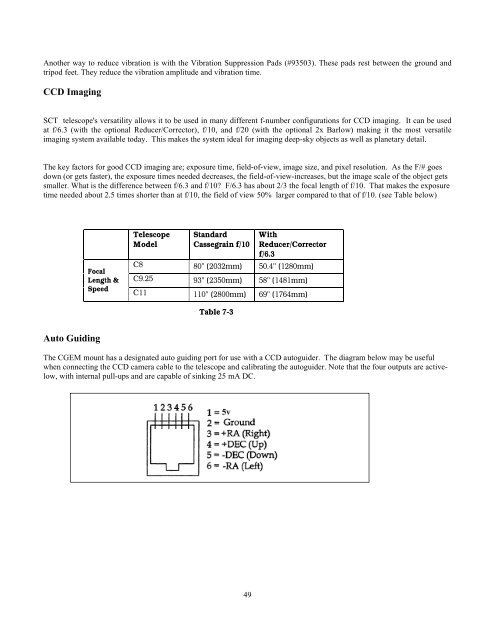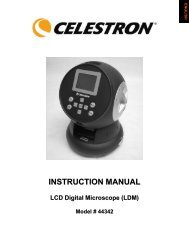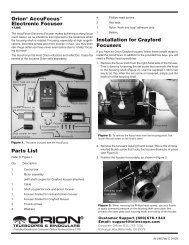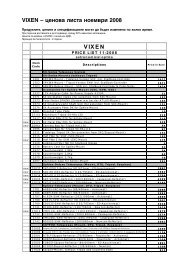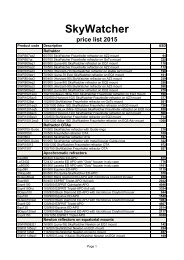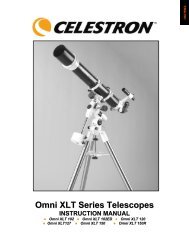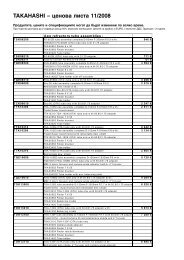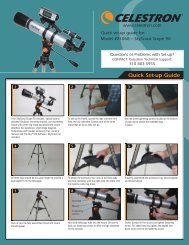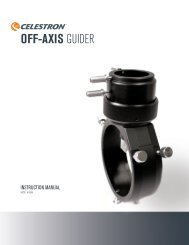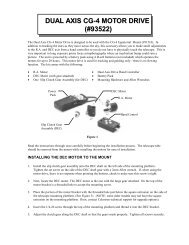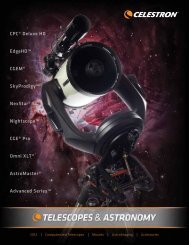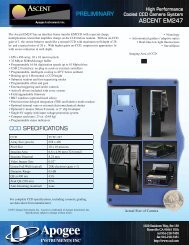You also want an ePaper? Increase the reach of your titles
YUMPU automatically turns print PDFs into web optimized ePapers that Google loves.
Another way to reduce vibration is with the Vibration Suppression Pads (#93503). These pads rest between the ground andtripod feet. They reduce the vibration amplitude and vibration time.CCD ImagingSCT telescope's versatility allows it to be used in many different f-number configurations for CCD imaging. It can be usedat f/6.3 (with the optional Reducer/Corrector), f/10, and f/20 (with the optional 2x Barlow) making it the most versatileimaging system available today. This makes the system ideal for imaging deep-sky objects as well as planetary detail.The key factors for good CCD imaging are; exposure time, field-of-view, image size, and pixel resolution. As the F/# goesdown (or gets faster), the exposure times needed decreases, the field-of-view-increases, but the image scale of the object getssmaller. What is the difference between f/6.3 and f/10? F/6.3 has about 2/3 the focal length of f/10. That makes the exposuretime needed about 2.5 times shorter than at f/10, the field of view 50% larger compared to that of f/10. (see Table below)FocalLength &SpeedTelescopeModelStandardCassegrain f/10WithReducer/Correctorf/6.3C8 80" (2032mm) 50.4" (1280mm)C9.25 93" (2350mm) 58" (1481mm)C11 110" (2800mm) 69" (1764mm)Table 7-3Auto GuidingThe <strong>CGEM</strong> mount has a designated auto guiding port for use with a CCD autoguider. The diagram below may be usefulwhen connecting the CCD camera cable to the telescope and calibrating the autoguider. Note that the four outputs are activelow,with internal pull-ups and are capable of sinking 25 mA DC.49


